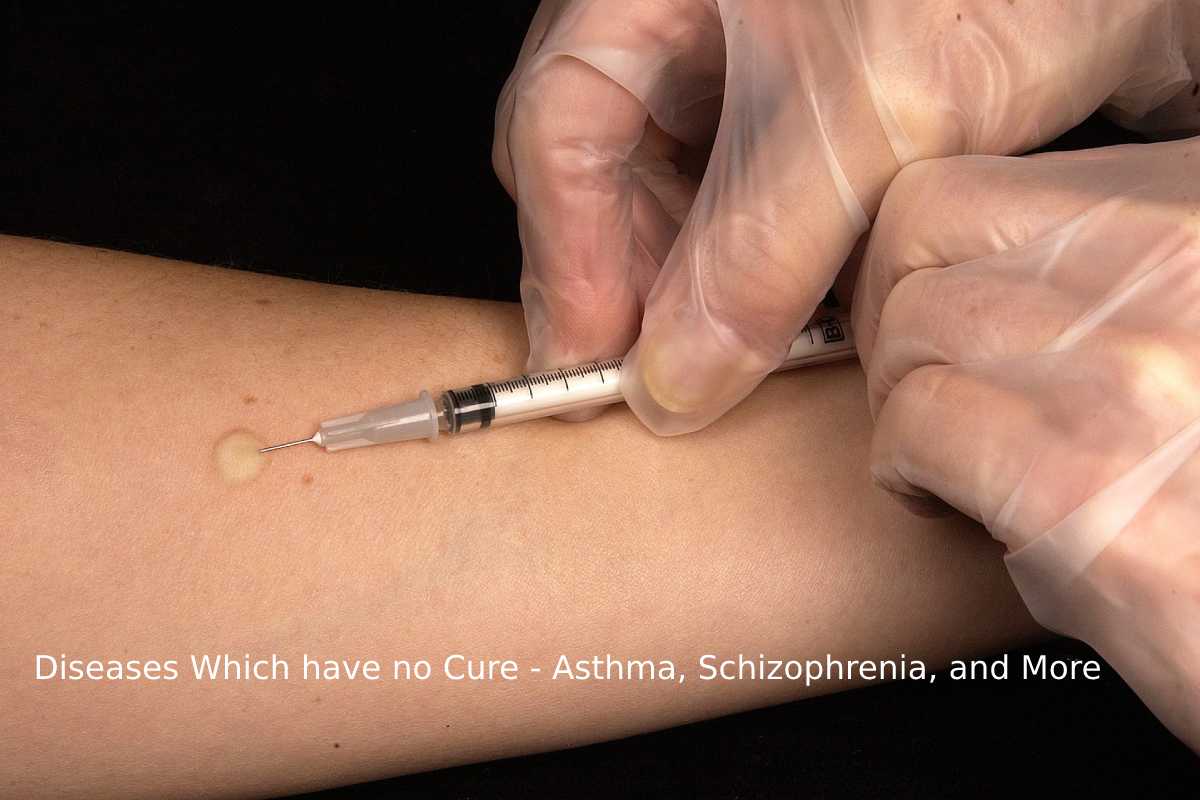Table of Contents
Diseases Which have no Cure
Diseases which have no cure- Histamines are released as a result of allergies or allergic disorders.
The most common type of allergy is allergic rhinitis, which is often known as hay fever. Other allergies include atopic dermatitis, allergic, anaphylaxis, and food allergies (not to be confused with food intolerances or food poisoning).
Allergies can be frozen in several ways, including with antihistamines, corticosteroids, avoiding the allergen, and allergen immunotherapy (also known as desensitization.)
Asthma
- The illness known as asthma increases the bronchial tubes’ susceptibility to irritation and inflammation.
- Although there is no known cure, there are treatments that can reduce the likelihood of an asthmatic attack in the patient.
Amyloid Angiopathy in the brain
- Amyloid beta peptide deposits in the walls of the central nervous system’s small to medium blood vessels and meninges cause cerebral amyloid angiopathy (CAA), a type of angiopathy.
- The word congophilic is used because microscopic examination of brain tissue after application of a specialized stain called Congo red can show the presence of aberrant amyloid aggregations.
- The condition is unrelated to other types of amyloidosis since the amyloid substance is solely present in the brain.
Schizophrenia
- The mental illness schizophrenia is marked by bizarre behavior, slurred speech, and disconnection from reality.
- Delusions, disordered thinking, the perception of voices that are not real, a loss of drive, a decrease in social interaction and emotional expression, and the perception of voices may also be symptoms.
- People who have schizophrenia frequently also suffer from anxiety, depression, or substance abuse issues.
- Most of the time, symptoms start in young adulthood, develop gradually, and never disappear.
Coeliac disease
- Coeliac disease, also known as celiac disease, affects persons of all ages who are genetically predisposed and is a chronic.
- Multi-organ autoimmune condition that primarily affects the small intestine and is brought on by ingesting gluten.
- The most prevalent variety is a “non-classic” appearance, which is more prevalent in older children (over 2 years old), adolescents, and adults.
- It is characterized by modest mucosal lesions without intestinal villi atrophy, fluctuating or sometimes wholly absent gastrointestinal symptoms.
- A wide range of extraintestinal manifestations that can affect any organ of the body, and frequently negative serological markers (TG2). The majority of instances go unidentified and undiagnosed.
- The uncertainty left untreated can result in various health issues and related conditions, including an increased risk of developing various cancers and a higher mortality rate.
- The only known effective treatment for the Celiac disease at this time is a rigorous, lifetime gluten-free diet.
- Which in most cases improves symptoms, allows the intestinal mucosa to heal, and lowers the risk of complications.
HIV/AIDS
- Although there is no treatment for HIV/AIDS, medications can assist in managing its symptoms.
- A chronic degenerative condition of the central nervous system that primarily affects the motor system is known as Parkinson’s disease (PD). Non-motor symptoms are more prevalent as the disease progresses.
- Typically, the symptoms develop gradually. The most noticeable signs of the disease in its early stages include shaking, rigidity, slow movement, and trouble walking. Problems with thinking and conduct can also happen.
- In the later stages of the illness, dementia becomes more widespread.
- Along with being ordinary, depression and anxiety affect more than one-third of those with Parkinson’s disease. Sensory, sleep and emotional issues are other symptoms.
- The main motor symptoms are “parkinsonian syndrome” or “parkinsonism” together.
Also Read: Crepe Myrtle Diseases Pictures – Treatment and More

